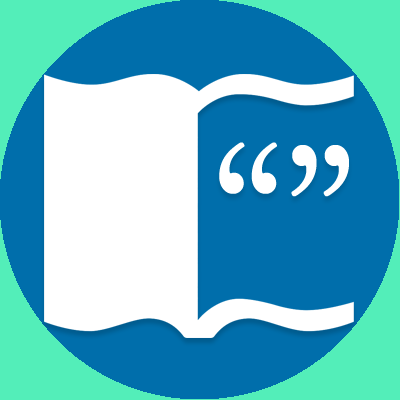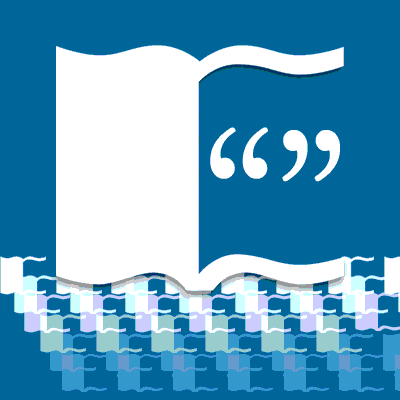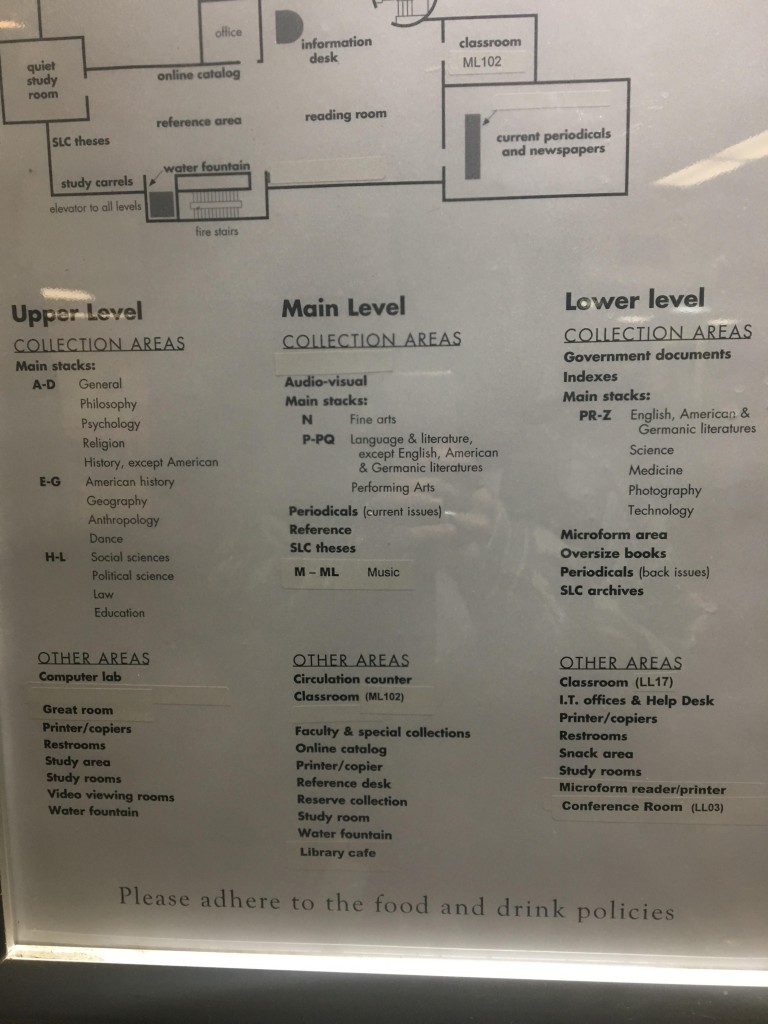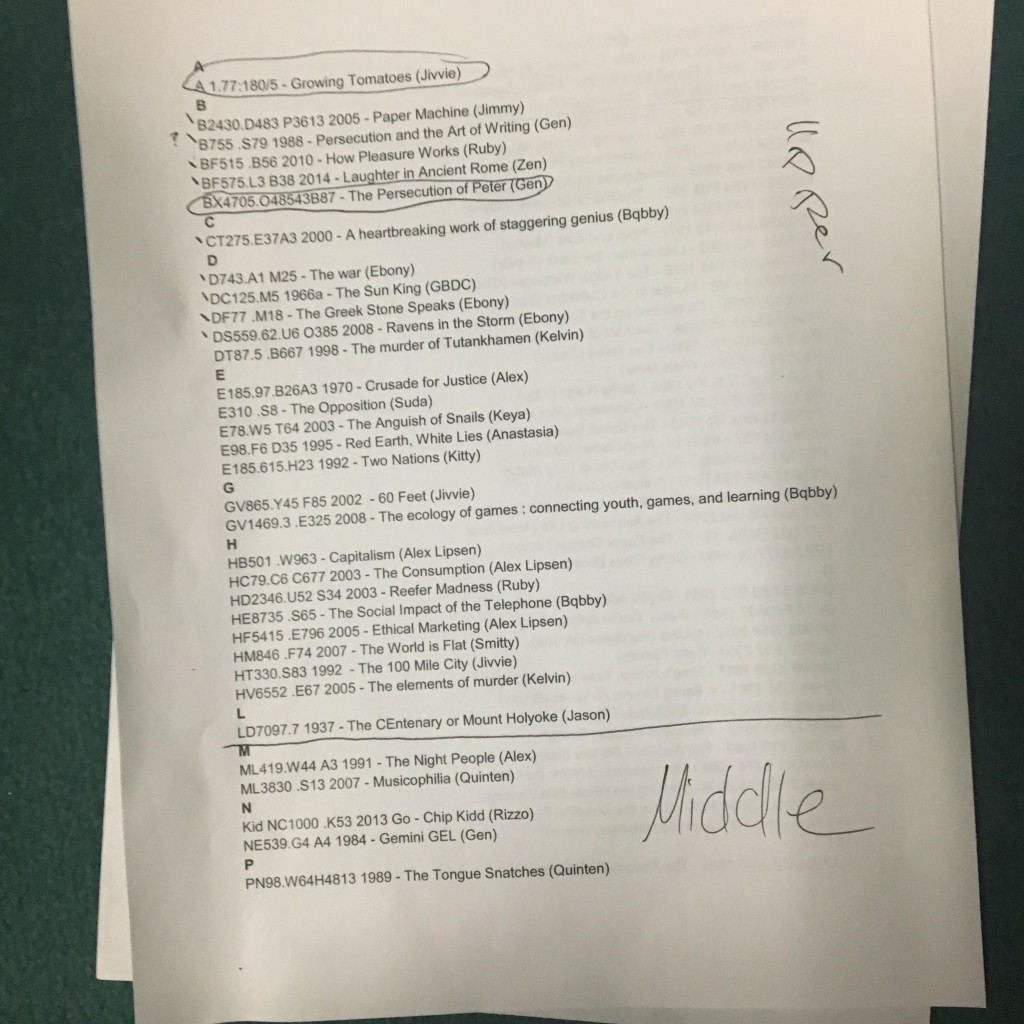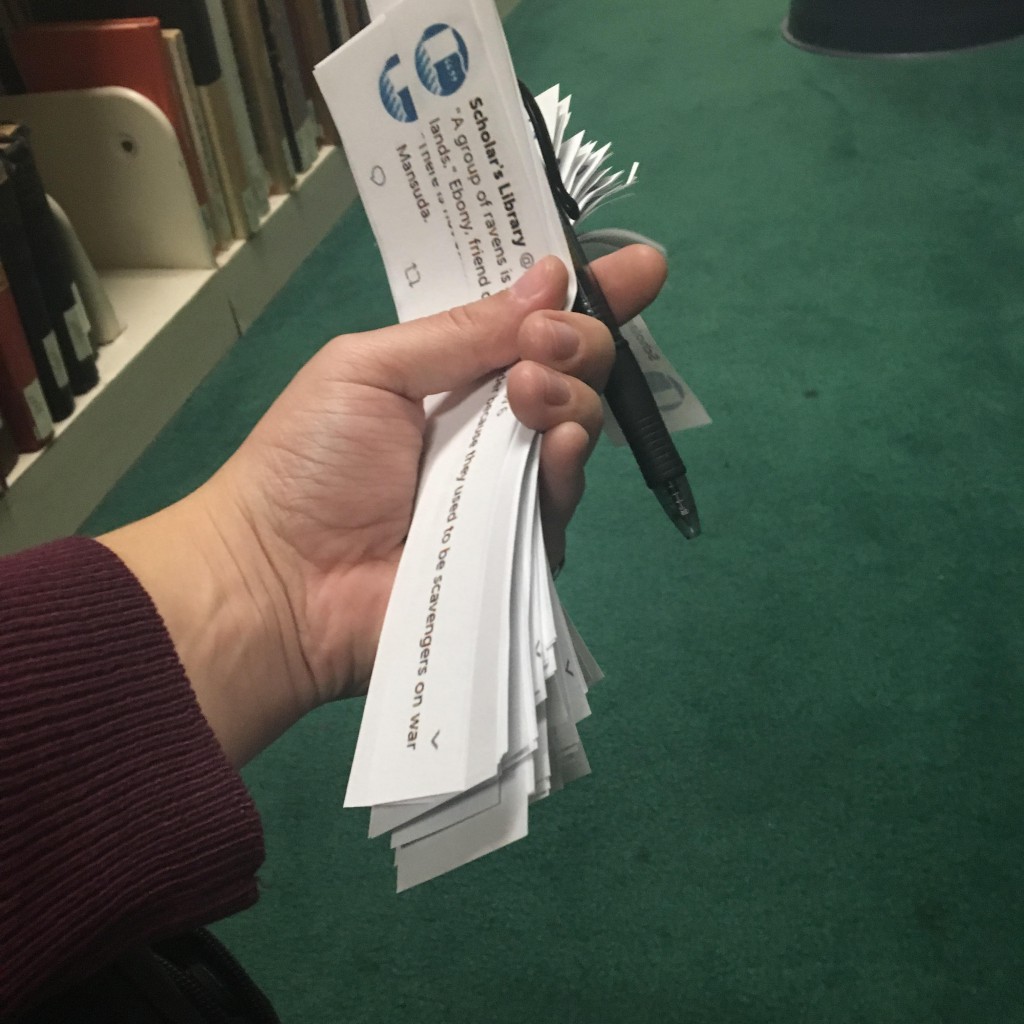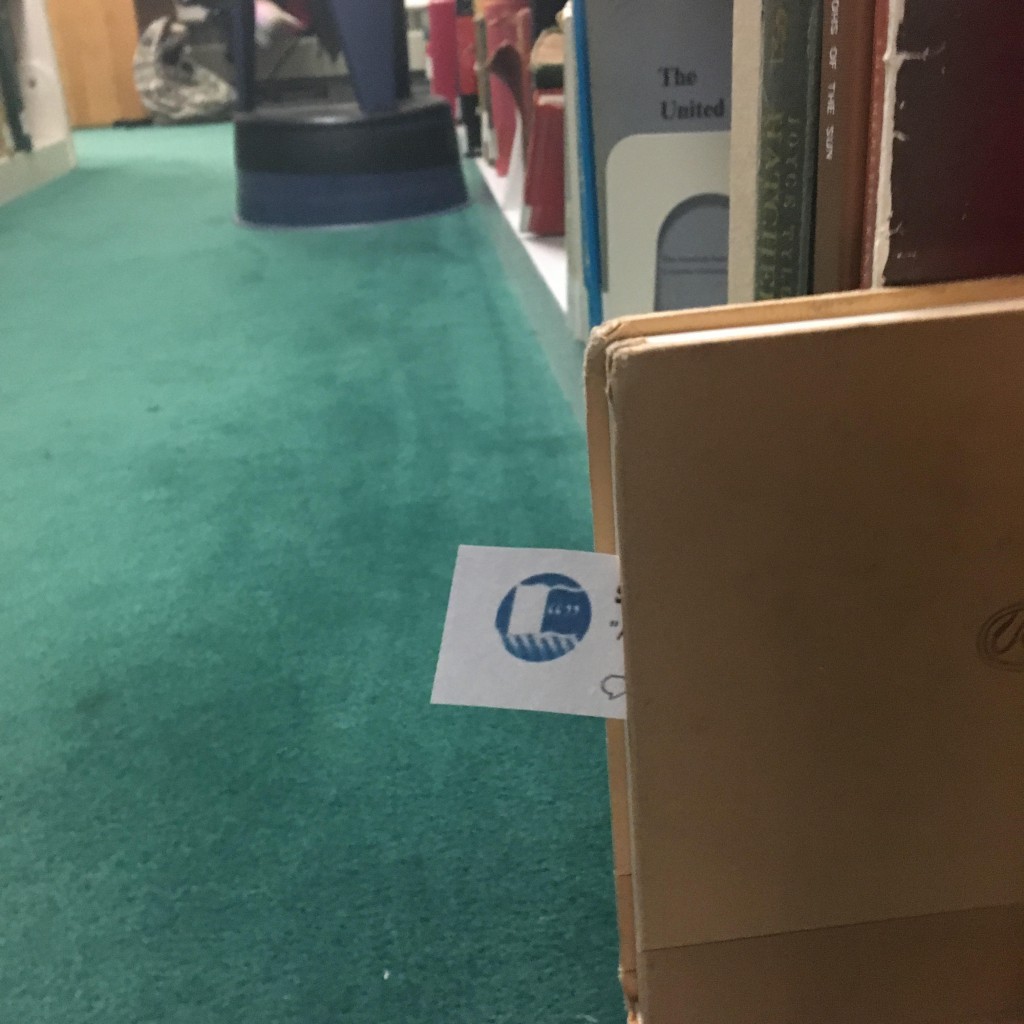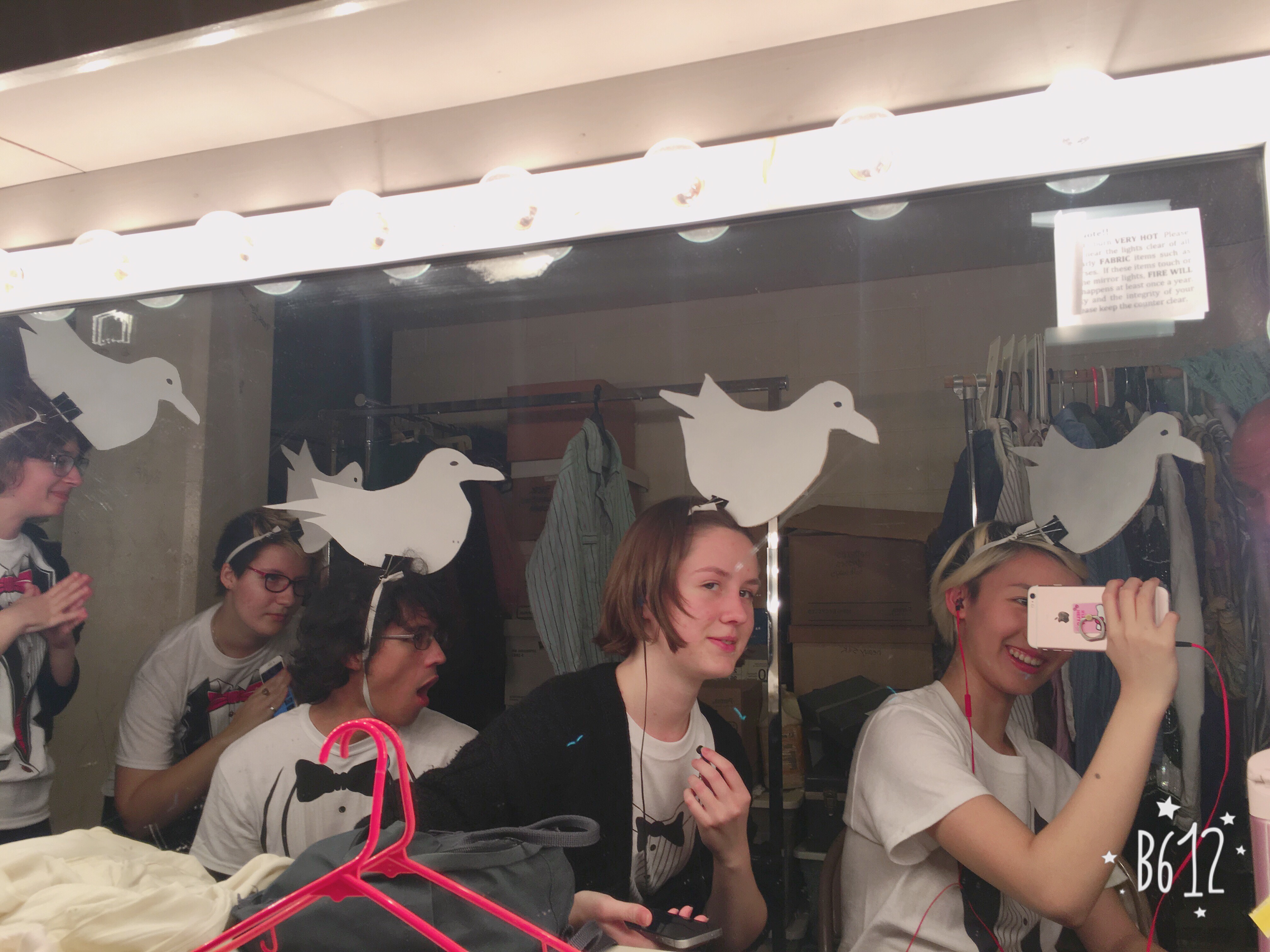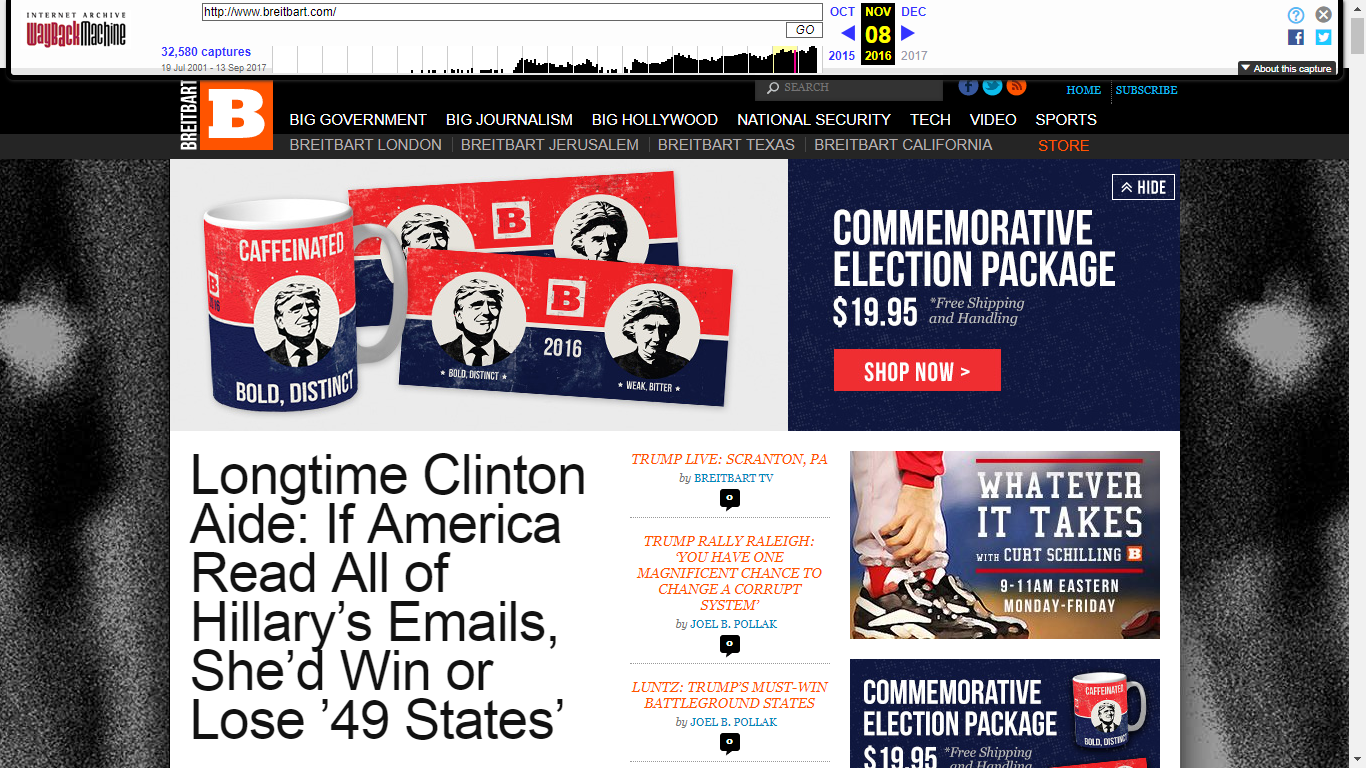On the same day, I read both the beginning of Beautiful Trouble by Andrew Boyd and a piece assigned by guest artist, Mandy Morrison. Beautiful Trouble is a guide for artists who want to work in socially, visually, and performatively effective ways. The piece Mandy Morrison assigned was “Dancing with Twitter,” a piece in The Mobile Story written by Susan Kozel, Mia Keinanen and Leena Rouhiainen. Their performance, entitled “IntuiTweet,” (Farman, 81) explores the kinesthetic sensations of movement as transmitted over Twitter and realtime re-enacted by other collaborators. Beautiful Trouble’s piece on “Media-Jacking,” written by Patrick Reinsborough, Doyle Canning and Joshua Kahn Russell, discusses using an opposition’s media power and time to create a disruption in favor of your cause or message (Boyd, 72). In light of the recent rise of politicians using Twitter as their broadcast, I thought it would be appropriate to take back Twitter. This idea solidified as I reread Daniel Dennett’s Memes and the Exploitation of Imagination; one quote about replication stuck in my mind: “a scholar is just a library’s way of making another library” (Dennett, 126). That day, I started the Twitter “Scholar’s Library.”
Since then, Scholar’s Library has been a project that I have worked on intermittently, adding to the Library over several months. Each tweet is composed in a consistent format, both visually and performatively. My initial goal for Scholars Library is to:
- Interact with people, semi-organically in physical and digital space
- Detail an aspect of who these people are, and therefore how to read their contribution
- Produce a ‘fact,’ whether factual or otherwise
For a visual format, I wanted to take each of these into consideration and develop a finished piece that was both different from the physical interactions and exactly the same in its intention. I created a simple formula for this:

The consistent performance aspect was initially unintentional. As I began speaking to people to create tweets, I found that I was very nervous and often couldn’t quite think of what to say. I noticed after the third person that in my nervous nature, I had repeated the same three questions every time:
- Name? This is going online, so you can use your name-name or an alias.
- Someone who you admire? It doesn’t have to be the person you admire most, just, someone.
- What is a fact you know?
These questions acted as a small interview, which in turn formed the tweets.
The project continued as a simple side project to indulge my own creativity until mid-November. At this point, by the recommendation of my class, I began to focus more on Scholar’s Library as a conference project. This is when the library entered the real world.
I developed and re-developed the presentation of the Library several times: initially, I considered projecting tweets onto the windows of the Sarah Lawrence Esther Rauschenbush Library during our finals week as a playful distraction, similar to the “99% bat signal” of Occupy Wall Street fame (Boyd, 273). However, as we did not have the ability to project on these windows (yet!), I had to rethink the physical aspect of the Library. I considered the qualities of the Library, the nature of the short-form tweet, and why I even wanted to present my Library in the campus library. Finally, I realized that what I wanted from the large-scale projection was two things: visibility and legitimacy.
What is more visible and legitimate than the thousands of books in a college library?
I started to rebrand the visual components of the twitter page. There were several versions of the Scholar’s Library icon. The basic design modified the book logo from Library of Congress, as it is an open source image. The color scheme also remained consistent as I intentionally chose a very stable and intellectual deep blue and white. The versions of the icon happened because, firstly, I could not decide what to put in the book! First it was a question mark, to reference the semi-factual nature of the project; after that, it became a simple S, for scholar; by the end, the symbols I chose were quotation marks, to honor the spoken component.
In critique, my class reminded me to consider one thing: replication. The origins of both the Dennett quote and Scholar’s Library was theories of how knowledge replicates. Replication is what lead me to the final icon, a book on a beautiful descending sea of identical books, fading as they moved farther and farther from their ‘source material.’
With my new digital digs, I planned. I wanted to be sure that I distributed the tweets at a time when there would be high circulation of atypical books. Of course, the perfect time was our impending finals, when approximately 1,300 students rush to the library to write papers on niche subjects they moderately care about. The next issue was “where.” Deciding which books to store the tweets in became a sort of game. But again, I returned to the many knowledgeable artists of Beautiful Trouble: “Stay on message” (Boyd, 178). My focus wasn’t about windows, or finals, or even the delicious chai that they never have in the library cafe. It was about the process of learning and replicating knowledge. Therefore, it seemed most appropriate to install the tweets in a series of books with language or fact related to the tweet. This was paired with opening the Scholar’s Library page on any available computer in the library and setting it as the homepage, giving the Library both a digital and physical preference. At the installation, there were 20 tweets in the library. This resulted in 80 books.
Installation was hilarious and taxing. Over the course of four hours, myself and my collaborator Wynn Heyward scoured the shelves for our 80 books. The list spanned all sections of the library, intentionally, and featured many silly or strange titles. Several students stared as we scampered through the library, tweets in hand, placing the small slips of paper logo-out in the books and turning them so the tweets stuck out in the aisle. There were a few books we could not find in this process; most were replaced with nearby alternates, but some were shuffled in with the extra tweets I had printed earlier. At the end, these extra tweets were positioned at the front desk, and after a long day of scholarly adventures, we left.
There are very few things I would do differently about this project, as I intend to do many different things with it in the future. I consider this the Opening Day for Scholar’s Library. It was successful in that I gained a few followers and noticed a few slips gone; it was unsuccessful in that I wished I had had more tweets, more help, and a generally larger production. Still, I thoroughly enjoyed myself, and plan to continue on with the Library.
If anyone has a contribution, find this Scholar and we will let the world know.

